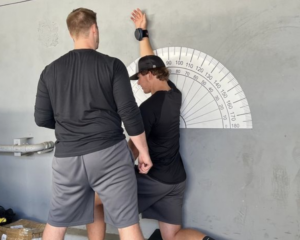Helping Athletes Reach Their Peak Performance Through Arm Care

An Official Armcare.com Performance Lab
Aspiring baseball and softball players are often prevented from achieving their dreams because their careers are derailed by arm injuries. While pitch counts, bands, and other preventative measures are well intentioned, they have not helped improve arm care rates. At KPI, we have partnered with Armcare.com to make the arm health process objective and tech based. We use arm sensors to measure the range of motion and strength levels of every pitcher at KPI. We create data baselines for each athlete and are able to adjust programming in real time based on the daily testing that pitchers perform. This approach has led to KPI experiencing incredibly low arm injury rates when compared to the general baseball population.
There is too much at stake for young and upcoming pitchers to leave their arm health to the opinions of a coach or trainer. At KPI we have systemized arm care to ensure the optimal health and peak performance is reached for the pitchers that train with us.
The Metrics
It is time for the baseball performance industry to move past the old way of doing things and start embracing technology to monitor and program arm health. Technology and data can tell us what really matters with arm health and each individual player can create a baseline for their own individualized routine by testing with armcare.com sensors.
The vast majority of arm injuries can be attributed to a lack of strength. Without strength, the arm cannot perform the throwing motion efficiently and the soft tissue will eventually start to breakdown, leaving the athlete at a higher risk of injury.
Fatigue is one of the first signs of an athlete losing strength and breaking down. With constant testing and monitoring, athletes can determine their average strength levels and be able to evaluate in real time if they are fatigued. If an athlete tests and they are fatigued, we can quickly adjust their programming to avoid injury.
Recovery is one of the new frontiers of performance enhancement. Many pitchers do not recover properly and they are at a higher risk of injury if they throw while recovering. Using armcare.com sensors can allow us to test athletes that are recovering and be able to recognize instantly if the athlete is in a recovery stage and adjust their programming accordingly.
Throwing
Players should dedicate about 20-30 minutes to their warm-up routine before picking up a ball to throw. Newer tools, such as plyo balls, can be used based on individualized needs. These balls are available at various weights and can build arm strength, improve connection work, or be used in arm path drills. Whether throwing is done with plyo balls or playing catch, a proper warm-up is essential.
Active Recovery Routines
The recovery aspect is as critical as the warm-up. Proper sleep and diet play the biggest roles in a good recovery for any athlete. Sleep is when the body and mind do all of their recovery, and a proper diet will supply the muscles, tendons, and bones with the right nutrients for healthy function. In addition to these two, more activation work to improve blood flow to the stressed area should be completed. We do not recommend using ice as part of a recovery routine.
Proper Preparation for the Season
The success of any in-season warm-up routine will depend on an athlete’s preparation for the season. A proper prep program should begin at least six to eight weeks before the spring season. As the weeks go by, repetition and volume should be added to the routine so that pitchers throw at high velocity and live batting practice for weeks before the start of the season. Most arm injuries happen within the first couple of months due to a lack of good pre-season preparation.

